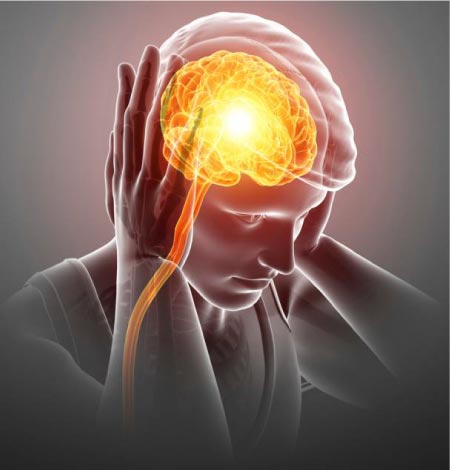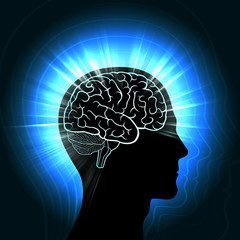The attack is often preceded by prodromes:
Irritability, asthenia, drowsiness, hunger, yawning.
Migraine Definition

- Migraine is often wrongly attributed to a disorder of the sinuses, teeth, refraction, neck, when it is indeed the result of a disturbance of the central nervous system..
Know your migraine
Migraine is a primary headache that is present without any underlying cause of other diseases.
- It is therefore not a symptom but a disease itself. With a prevalence of 15%, migraine is one of the most frequent neurological conditions.
- It is caused by a combination of genetic (80% of migraine sufferers have a family history) and environmental factors that result in hyperexcitability of the brain with dysfunction of the neuromodulatory pathways in the hypothalamus and the brainstem. Migraine is then triggered by the activation of a complex mechanism that causes the release of inflammatory substances, causing pain, and a variety of associated symptoms depending on the affected structures of the central nervous system (CNS).
- The pain can be unilateral or bilateral, pulsating or like a pressure. It often predominates in the frontal, ocular, temporal or occipital region. It often requires bed rest.
- The duration can vary between 4 hours to 72 hours.
- It has two varieties, migraine without aura which is the most frequent and migraine with aura in which the headache is preceded or accompanied by transient visual or other neurological symptoms.
Migraine without aura
-
Migraine headache begins gradually, during the day or at the end of the night, reaches its peak after a few hours and lasts half a day to a few days. Often pulsating, unilateral and rocking, its intensity is moderate to severe.
-
It often involves posterior pain with associated neck pain, which misleads the diagnosis towards a headache due to cervical arthritis or Arnold’s neuralgia.
-
It is aggravated by routine physical activities – walking, light, noise and improved by rest in the dark. Nausea and/or vomiting are frequent. In children, the attack is accompanied by pallor, often lasts less than 4 hours and is calmed by sleep.
Migraine with aura

Migraine Aura
Auras are transient episodes of neurological symptoms, lasting a few minutes to a maximum of 1 hour, which most often precede the headache, but sometimes accompany or follow it, or may even occur without any pain.
One can have only one symptom of aura, or a succession of different auras. The first episode of the aura is usually very distressing for the person.
The extent to which migraine can disrupt the lives of those living with it is vast. So it’s no surprise that migraine often comes with feelings of hopelessness and helplessness.
The most frequent auras are :
-
Visual Aura
moving, scintillating peripheral scotomas, in the form of dots or lightning, blurred vision, narrowing of the visual field, hemianopsia
-
Aphasic Aura
language disorder
-
Sensory Aura
ascending brachio facio-labial paresthesias
